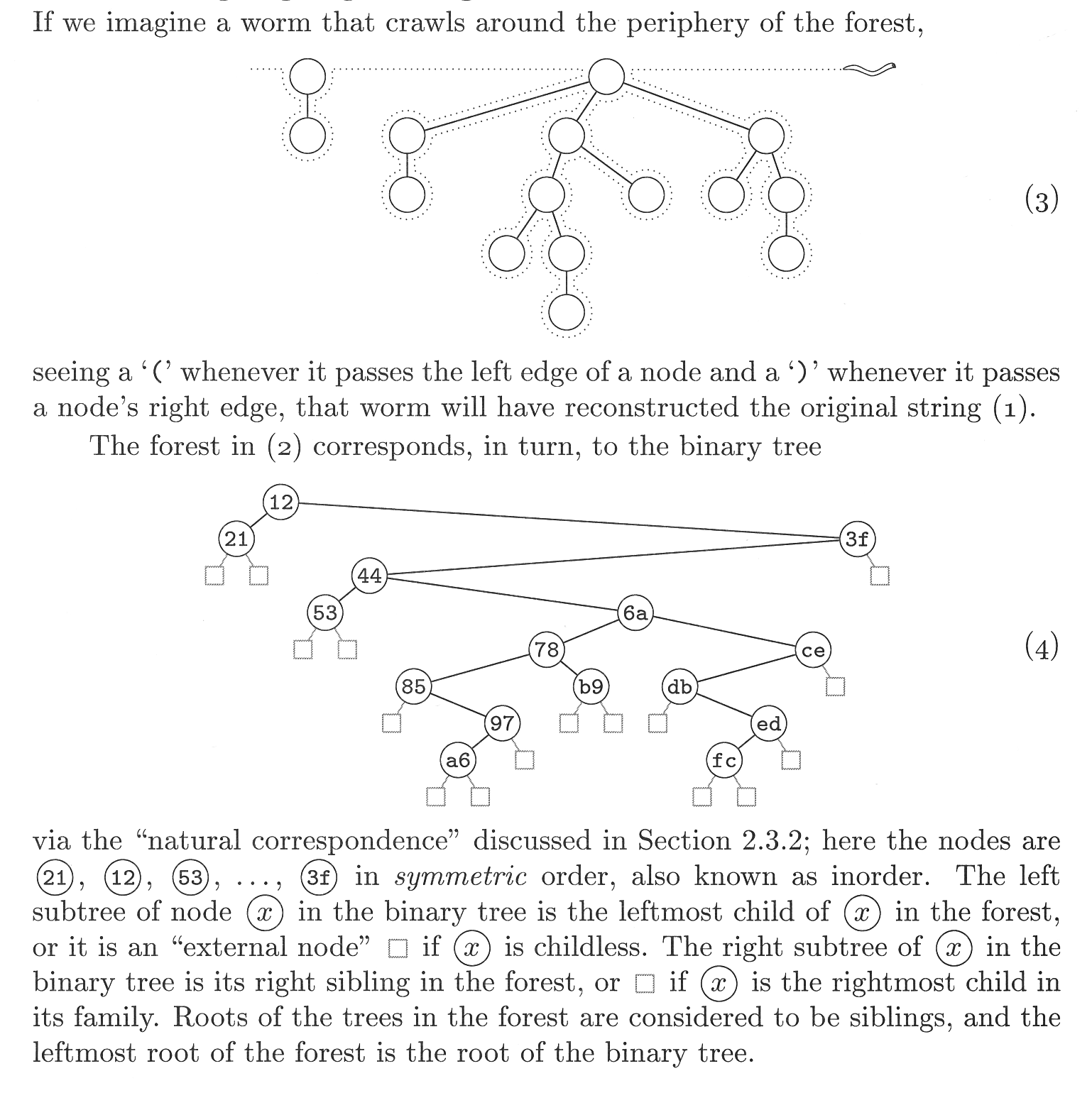@Book{Knuth2006,
Author = {Knuth, Donald E.},
Title = {{Generating All Trees: History of Combinatorial Generation}},
Bookseries = {{The Art of Computer Programming}},
Volume = {4},
Note = {fascicle 4},
Publisher = {Routledge, Kegan \& Paul},
Address = {London, Boston and Henley},
Year = 2006
}
p.3
===
If we imagine a worm that crawls around the periphery of the forest, seeing a ‘(’ whenever it passes the left edge of a node and a ‘)’ whenever it passes a node’s right edge, that worm will have reconstructed the original string (1).

p.35
====
25. [30] (Pruning and grafting.) Representing binary trees as in Algorithm B, design an algorithm that visits all link tables l1...ln and r1...rn in such a way that, between visits, exactly one link changes from j to 0 and another from 0 to j, for some index j. (In other words, every step removes some subtree j from the binary tree and places it elsewhere, preserving preorder).

0 Hornbeam
1 Beech
2 Maple
3
4
5
6
7
8
9 Oak
10
11 Linden
12
13
https://www.flickr.com/photos/foam/20976922469/